Do you know your trucking history?
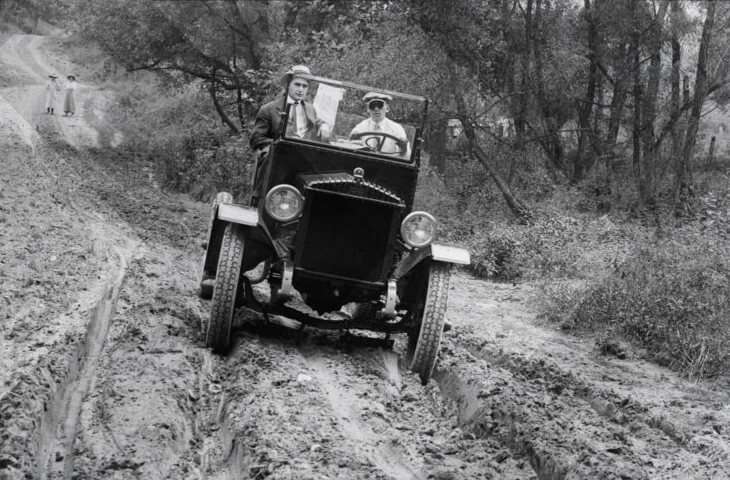
Listen up!
Check out our podcast, Freight Nation, where industry experts talk all things trucking.
Alexander Winton and the birth of the trucking industry in 1898
Although originally in bicycles, Winton went into the “horseless carriage” business founding the Winton Motor Carriage Company. The only problem was that when people ordered a motor carriage (what we now know as cars), they wanted it delivered without miles or damage. Since buyers lived across the country, Winton created the first car hauler to deliver the new cars.
These haulers closely resembled its horse-drawn wagon predecessor, but the driver sat in front of the mechanized motor; a cart was attached to the back. These carts were a simpler form of the “flat-bed trailer” you know today – a platform on wheels used to move freight.
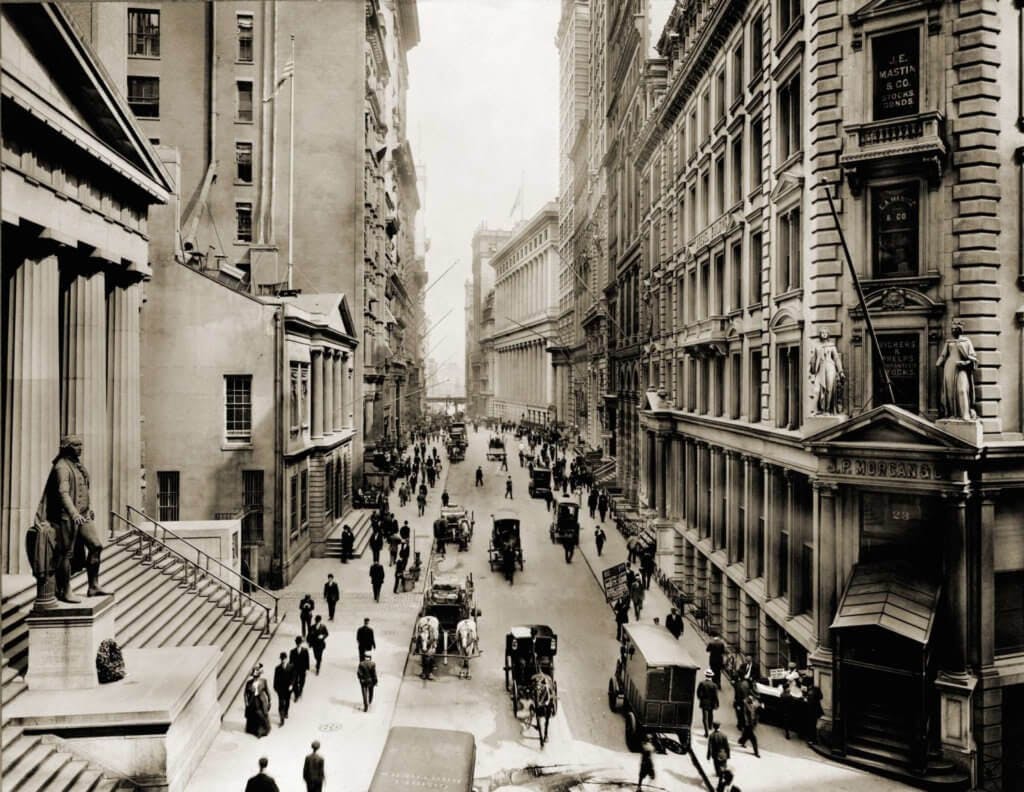
In 1904, there were 700 trucks motoring around the U.S. By 1910, there were about 10,000, primarily in big cities for small deliveries.
These first delivery trucks were anything but comfortable. The tires were made of solid rubber making for an uncomfortable, slow, and bumpy ride; goods were often delivered damaged. In 1912, running lights were added which meant drivers could move goods at night.
Due to excessive road damage caused by the solid rubber tires (and sometimes iron ones!), the first state weight limits were adopted by Maine, Massachusetts, Pennsylvania, and Washington in 1913.
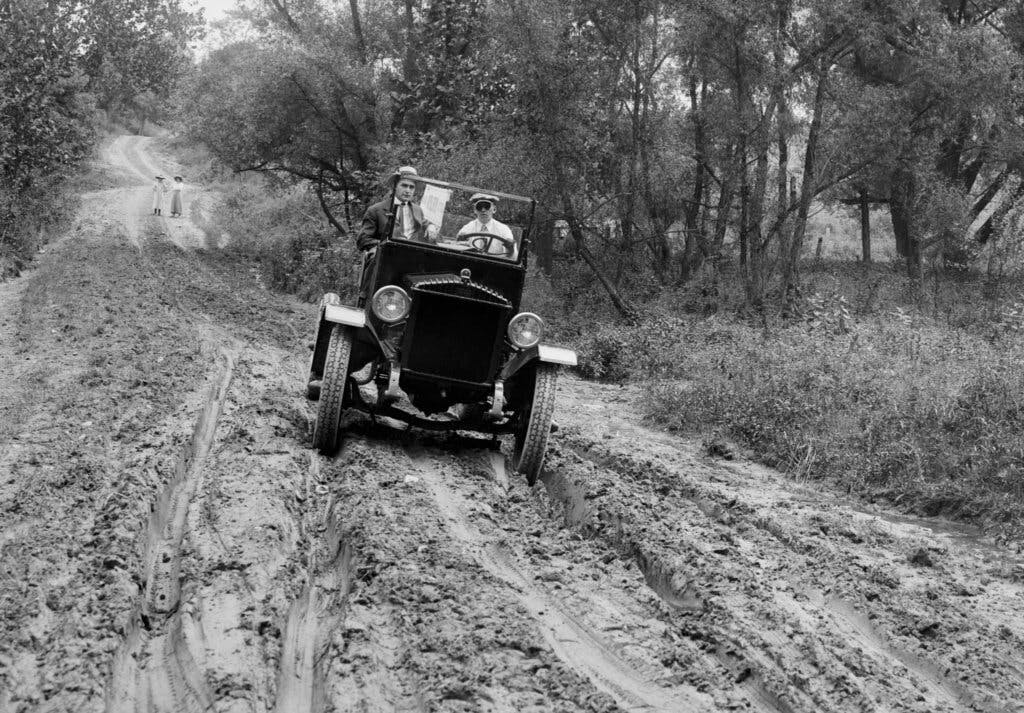
By 1914, there were nearly 25,000 trucks and less than 15,000 miles of paved roads in the U.S. That changed quickly over the next 10 years as the government invested $75 million to build new roads and improve old ones.
August Charles Fruehauf built the first semi-trailer in 1914 at the request of a wealthy lumber merchant who wanted to move his boat around. It worked so well, the same merchant asked for more trailers to move his lumber which lead to the development of the Fruehauf Trailer Company in 1918.
The introduction of the fifth wheel, patented by Hermann Farr in 1915, was a vast improvement to previous hitches making it faster to pick up and drop off trailers, as well as easier to travel on unpaved roads.
In 1916, the Seattle Chamber of Commerce sponsored a truck to travel to New York City; it took 31 days. Today, a car can travel that distance in 42 hours.
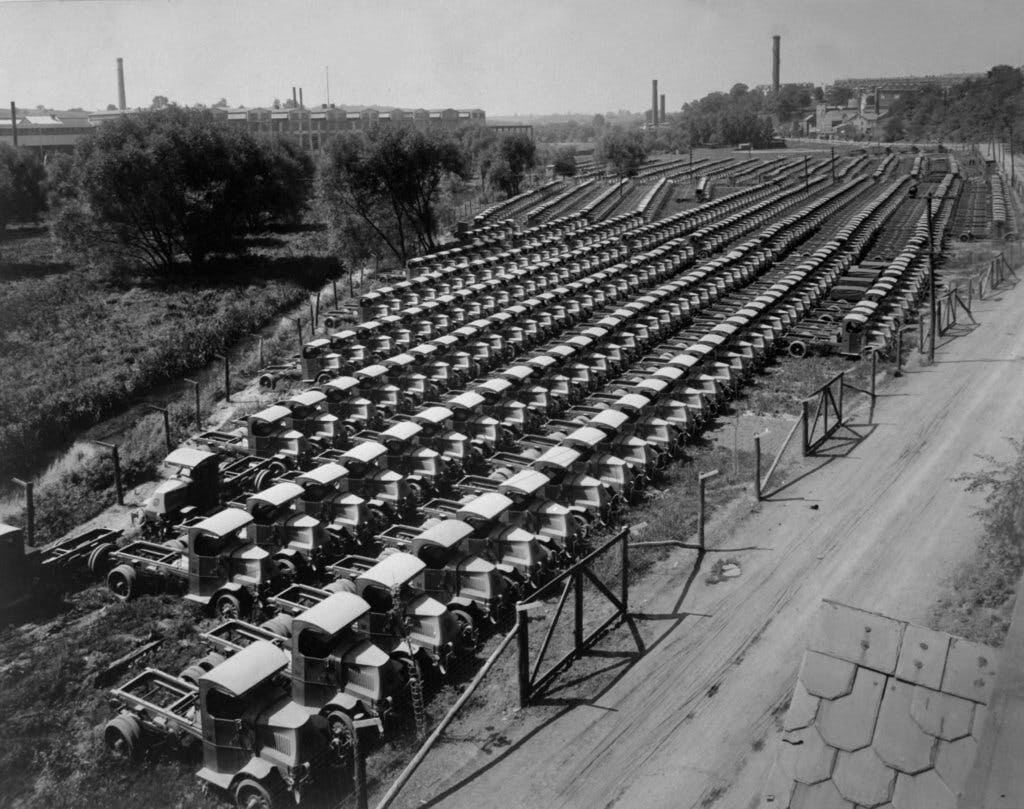
Troops started using heavy-duty trucks during World War I. In 1917, the “Liberty Truck” was produced. With a top speed of 15 miles per hour, it represented a huge leap forward in military trucks and helped standardize the types of vehicles used by the army.
By the 1920s, most semi-trailer trucks were being outfitted with air-filled (pneumatic) tires allowing for smoother rides and faster speeds.
All of these advances to the semi-trailer and investment in infrastructure led to the modern trucking industry we know today. Businesses could move more product across greater distances faster than ever before.
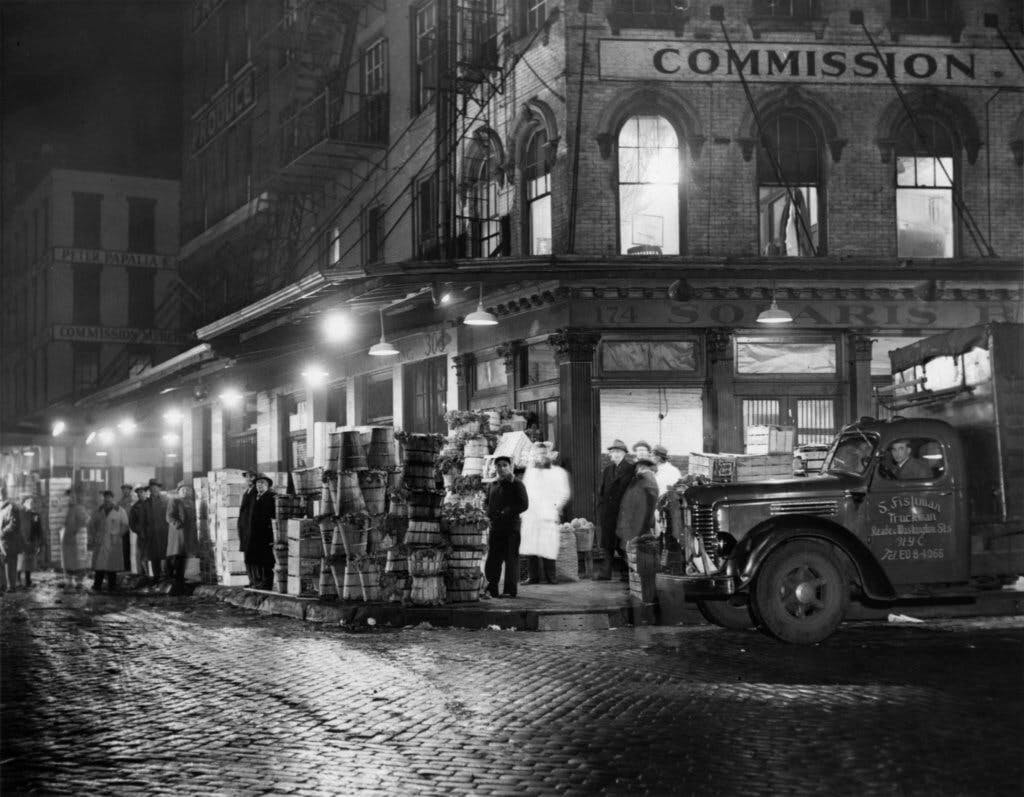
The 1930s saw 329,000 long-haul trucks registered in the U.S. That’s an increase of more than 3,000% more trucks on the road than in 1910!
It was around this time that trucks started dominating the freight industry. Prior to that, railroad was king of transportation.
In 1933, the American Highway Freight Association and the Federation Trucks Associations of America combined to form the American Trucking Association (ATA). The ATA advocates for those in the trucking industry.
Concerned about the increase in semi-trailers on the road, the government passed the Motor Carrier Act in 1935. This helped increase safety regulations and impacted all trucks operating on the nation’s highways.
The first National Truck Roadeo was sponsored by the ATA in 1937.
It’s now known as the National Truck Driving Championships. Each year, hundreds of the nation’s best professional truckers undergo a series of tests to demonstrate their knowledge of the road and driving skills. Only drivers accident-free for a year can compete. This year, 424 men and women competed!
In 1938, the government set the first Hours of Service (HOS) rules for truckers. Drivers were limited to 12 hours of drive time and no more than 15 hours of on-duty time. The 12-hour rule was changed a 10-hour rule the following year with no on-duty hours designated and 8 hours of off-duty time.
The technology for portable cooling units was created by Frederick Jones in 1939. The refrigerated unit originally sat underneath trucks, but was moved to the top when they discovered it clogged from road dirt. Perishable foods could now be delivered across the U.S. changing the variety of foods available in restaurants and grocery stores. The new technology was also used to get food and medicine to troops during World War II.
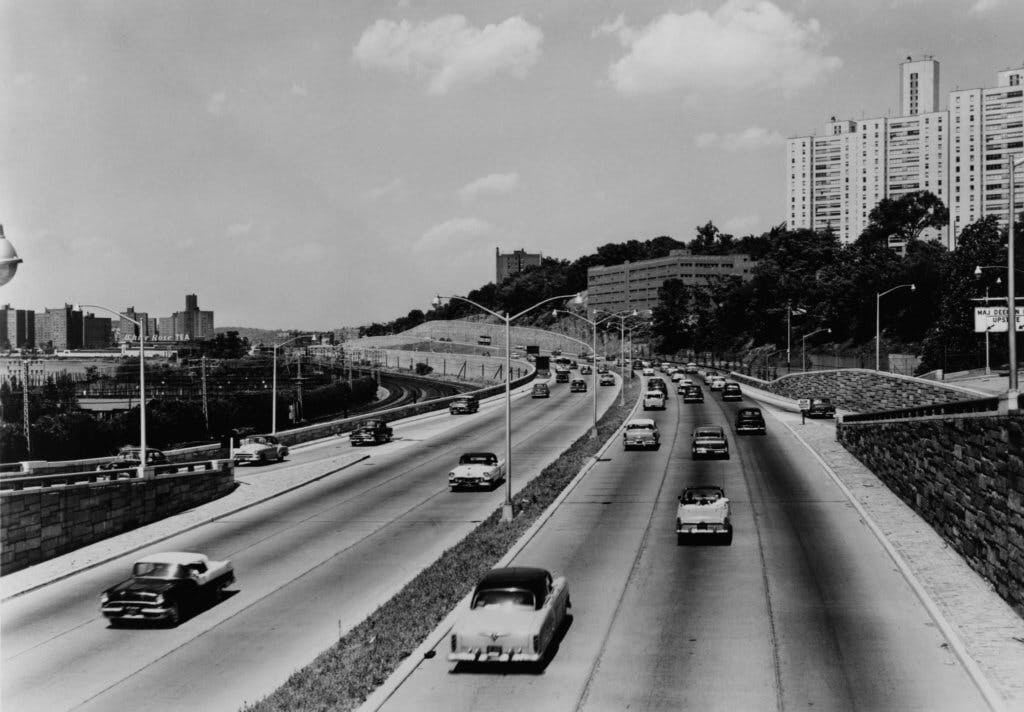
In 1956, the feds passed the Federal Aid Highway Act creating 41,000 miles of interstate across the U.S.
With a dedicated $25 billion over the next 20 years, this act fundamentally changed how the interstate system and trucking looks today by connecting major cities across the states.
Hours of service went from no designation of on-duty hours to 15 on-duty hours in 1962.
The Department of Transportation (DOT) was created in 1967 significantly changing the framework for drivers. Among other things, the DOT oversees federal regulations governing the use of America’s roads and highways.
Trucking cements itself in pop culture in film with Smokey and the Bandit (1977), Breaker! Breaker! (1977), and Convoy (1978), and songs like Eddie Rabbit’s “Driving My Life Away” (1980) and Alabama’s “Roll On 18-Wheeler (1984).
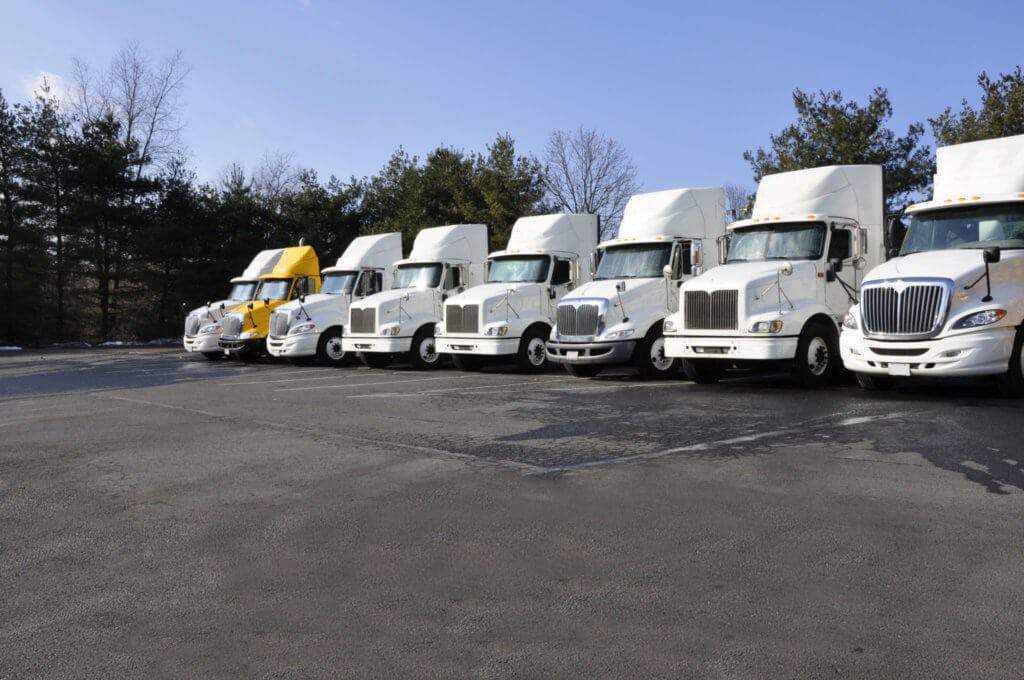
Brought about by higher prices due to a fuel shortage, the Motor Carrier Act of 1980 de-regulated the entire trucking industry (unlike the Motor Carrier Act of 1935). Without any regulations, the number of trucking companies doubled. Motor carriers had more freedom to set their own rates, but competition contributed to truckers making a less money. (Make sure you have a good load board. It will help ensure you work with trusted partners and make more money.)
In 1981, the maximum gross weight limit of 80,000 on interstate highways was adopted by all the states.
Truckstop (originally InternetTruckstop.com) became the first internet load board in 1995. Founder Scott Moscrip wanted a better way for drivers to find loads than bulletin boards and the sides of their trucks. It worked! Truckstop.com now offers an extensive suite of innovative products all designed to help truckers and brokers in the freight industry.

The first National Truck Driver Appreciation Week is celebrated in 1998!
One week every September, #NTDAW seeks to highlight safe drivers, and remind us all that without truckers, our way of life would look very different. #ThankATrucker today!
In 1999, the Motor Carrier Safety Improvement Act established the Federal Motor Carrier Safety Administration (FMCSA). The FMCSA is one of the major programs within the DOT and is responsible for regulating and providing safety oversight for commercial vehicles.
In 2005, the FMCSA issued the first major change to the HOS rules since 1939 requiring drivers take 10 off-duty hours (including 8 hours of rest). Although unpopular at the time, the changes did contribute to lower crash and fatality rates.
The FMCSA published the electronic logging device (ELD) mandate in 2015 designating that all carriers replace paper logbooks with on-board recording devices by December 2017. ELDs track hours of service in addition to other vehicle information like speeding, idling, truck maintenance, and more.
Today, there’s an estimated 15.5 million trucks on the road and over a million trucking companies in the U.S. alone. The trucking industry employs approximately 8.9 million people, 3.5 million of which are truckers. Nearly 70% of all freight being moved is transported by trucks; that’s equivalent to $671 billion worth of goods!

We wouldn’t be anywhere without the hard-working men and women in transportation. #ThankATrucker
Topics:
Get helpful content delivered to your inbox.
Sign up today.
Find high-quality loads fast, get higher rates on every haul, and access tools that make your job easier at every turn.






